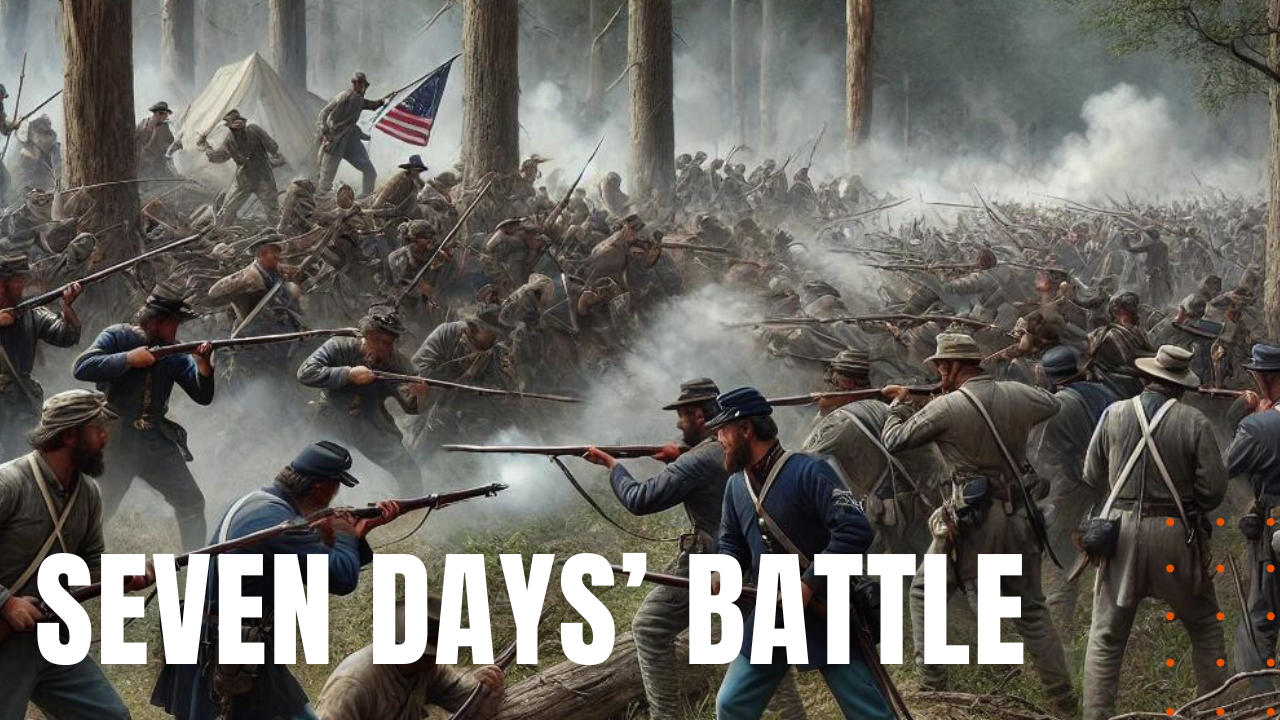The Seven Days’ Battle

During the early months of 1862, the Southern armies had suffered egregious defeats in Tennessee, on the Mississippi, in the Carolinas and in the Virginia Tidewater. On the evening of May 31st, tens of thousands of battle-weary men near the rural crossroads of Seven Pines Virginia prayed for sundown and a break from the fighting. With the Union Army less than ten miles from the Confederate capital and industrial centerpiece at Richmond, President Jefferson Davis saw his grim odds worsen when Confederate army commander General Joseph E. Johnston took a bullet to his shoulder, forcing Davis to appoint Robert E. Lee as commander of the Southern armies.
Order No. 75
Lee went to work immediately, and since abandoning Richmond or fighting a defensive battle was not in his vocabulary, Lee sent out Order No. 75 to his generals on June 24th, which called for a three-column offensive two days later, against Union General George B. McClellan, in command of the largest army ever to take the field in North America. Guessing Lee’s intentions, McClellan attacked on the 25th at Oak Grove Virginia, handing Lee an enormous gift when McClellan failed to press the fight come sundown. After Major General “Stonewall” Jackson failed to arrive as planned on the 26th, Lee attacked Federal positions at Meadow Bridges, driving Union forces eastward through the village of Mechanicsville, before suffering several bloody repulses at Beaver Dam Creek.
Too Late to Defend
After Jackson and his men finally reached their flanking position, McClellan realized his position at Beaver Dam Creek was no longer defendable, retreating under the cover of darkness on the morning of the 27th to an impromptu breastwork at Boatswain’s Creek, and when Jackson yet again failed to reach a new position at Old Cold Harbor, a frustrated Lee attacked the Union Army at Gaines’ Mill along a two-mile front that saw 95,000 men clash amid unimaginable carnage, leading to 15,000 casualties in less than half a day, at the same time, handing Lee his first battlefield victory of the Civil War. The following day would witness a Union retreat south for the James River, until elements of both armies skirmished at Savage’s Station on the 29th.
Costly Night Attack
Continuing their retreat for the James, when leading elements of the Union Army reached Malvern Hill, the column snaked five miles back to Glendale. Both commanding generals saw the potential to cut the Union Army in two, leading to a day of artillery fire at White Oak Swamp, followed by Lee’s night attack on Union positions, which led to the death of 3,600 Confederates and 2,700 Federal defenders. On July the 1st, 1862, Federal guns overwhelmed Confederate forces at Malvern Hill, and while the Union Army won the day, Lee had effectively erased a year of Union gains in the course of a single week. The running battle saw 19,000 Confederate casualties to the Union’s 15,000, making the Seven Days’ Battle, the bloodiest single week in American history.
